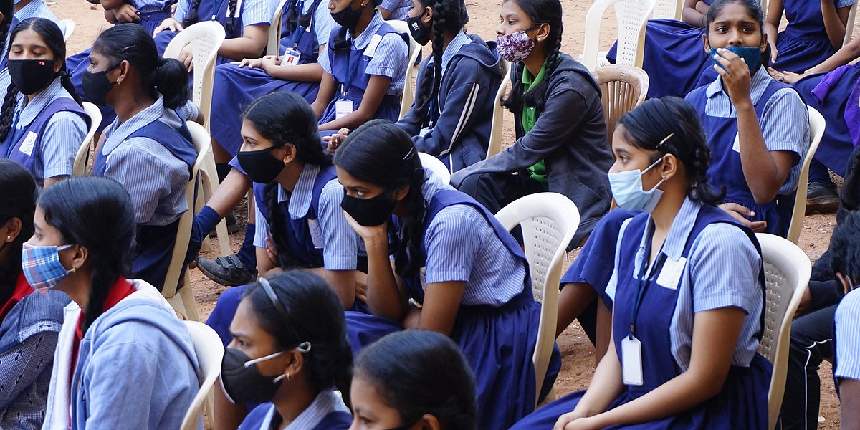CUET UG: Admission delays, vacant seats, loss to local students have universities seeking alternatives
CUET exam system must be more streamlined, institutes should be able to admit students without CUET score, feel universities
 CUET UG: Many universities are unable to fill vacant seats since CUET was introduced (Image: allduniv.ac.in)
CUET UG: Many universities are unable to fill vacant seats since CUET was introduced (Image: allduniv.ac.in)Atul Krishna | March 20, 2024 | 10:25 AM IST
NEW DELHI: In October 2023, four months after opening admissions, Allahabad University’s academic council made a tough decision – it allowed its affiliated colleges to abandon CUET scores and fill 50% of their seats through other means of selection as a “special case”. The council even discussed the possibility of ditching the Common University Entrance Test (CUET) altogether for the 2024 admission cycle, but ended up sticking with it as the ministry “did not give permission” to carry out its own test.
Conducted by the National Testing Agency (NTA), the CUET UG is a national-level entrance test for undergraduate and postgraduate programmes in the 44 central universities and other participating institutions offering general programmes of study. It was introduced by a central diktat in 2022 and replaced the Central University Common Entrance Test (CUCET) and several other admission tests and policies.
CUET UG 2024 exam dates are in May; results are expected by June 30.
Post CUET admissions
Before the University Grants Commission (UGC) and the education ministry insisted on CUET being the only port of college entry in central universities, each had the autonomy to develop its own admission policy.
But as the experiences of multiple universities show, the change in admission process left swathes of seats vacant, delayed admissions by months and altered the nature and composition of student batches.
“Seats were vacant due to the late admission process and the delay in CUET results. Actually by the time the admission process ended, interested students had already taken admission in other universities or colleges,” said Arun Kumar Singh, deputy registrar (college development), Allahabad University. It had decided to resume its own entrance test for 2024-25 but the ministry did not allow it.
Also readAfter NEP 2020, scholarship and research fellowship funds declined by over Rs 1,500 crore
“The university had been in communication with the ministry for permission to conduct its own UGAT (undergraduate admission test). The university did not get the permission and has thereafter decided to go ahead with the admission for UG courses under CUET,” said Jaya Kapoor, public relations officer.
University officials also said that they have not yet decided on taking in non-CUET candidates like last year. “Also last time, the admissions were delayed by many months. The entire process took a long time. But if this session runs fine, we will follow the CUET system,” said an official under the condition of anonymity.
Other central universities such as the Manipur University only ever allowed 50% students through CUET to ensure representation of local students. Central University of Karnataka saw many students withdrawing. Most university officials agreed that the CUET system needs to be quicker and more streamlined for it to make sense. Institutions should also be allowed to admit students without CUET scores after the initial rounds are over, they said.
CUET and vacant seats
Newer central universities, such as the Central University of Karnataka, are getting the short end of the stick with CUET. Seats in many departments, including engineering and sciences, remain vacant. Some attribute this to the delay in the admission process as many state and private universities close admissions by the time CUET results are out.
“We go for third round, fourth round, and open counselling, but seats are not filled. Since we don’t allow students who have not written CUET to appear for counselling, only a limited number of students turn up… In engineering, some 20 seats are vacant but in subjects like Hindi, music, folklore, there aren’t many takers. Even popular subjects like physics, chemistry, mathematics, seats remain unfilled,” said Basavaraj P Donur, director of academics, Central University of Karnataka.
“Since we conduct a common entrance test in all the programmes in all the central universities of India, we start the admission process around the same time. Students who take admission in the beginning, especially students from far-off places, when they get a university close by, they cancel admissions and move to universities [close to home]. As a result of which, seats remain unfilled,” said Donur.
The larger, more established universities did not fare much better. Allahabad University was forced to apply its quick-fix solution in October while admissions were still on as its affiliated colleges were struggling to find students.
Delay in university admissions
After the NTA publishes the results, it internally notifies participating universities with a list of students who have opted for them with their CUET scores. But universities still ask students to register on the university website prior to admissions. This process can take a few months and lead to delays. The delay often forces students to take admission in a private university or a state university as a failsafe.
“Once CUET results were published, Allahabad University had also taken much time to register students. This process took more than one-and-a-half months,” said Arun Kumar Singh.
To put this into perspective, the CUET results in 2023 were released on July 15 and Allahabad University could begin the admission process only after this date. Meanwhile, Lucknow University, a state university also in Uttar Pradesh, had closed online application forms for undergraduate admissions by July 4.
Delay caused issues in other universities too. Delhi University had faced criticism from its teachers as seats remained vacant despite multiple admission rounds even though the process started immediately after CUET results.
Delhi University had admitted students through its new online Common Seat Allocation System (CSAS) where students had to register again with their CUET score. However, even after four rounds of seat allocations, more than 5,000 UG seats were lying vacant in more than 60 DU colleges. Teachers chalked this up to the “uncertainty” caused by the delay in the CSAS system.
It required a “special spot admission” and multiple rounds of admissions after that to fill the seats. “It was not just four rounds. We had done many rounds [and] after that, we also did a mop-up round on the recommendation of the UGC. This year we will see as it evolves but we are hopeful that the seats will get filled… The majority of seats were filled.… In our 70,000 seats we managed to fill 69,000 seats through mop-ups,” said Haneet Gandhi, dean of admission, Delhi University.
CUET: Streamlining admissions
Officials said that the UGC should focus on creating a system to streamline this admission process so that admissions are not delayed.
“The CUET process should be completed as early as possible. All universities should be ready as soon as they get their results to start admission. Students should not be forced to register again on the university website when they have already given their preferences. The universities can publish their cut-offs accordingly. A system should be there to allot seats. This should shorten this duration by at least one month,” said Arun Kumar Singh.
Also read Academic Bank of Credits: 1,800 institutions on board, only 30% able to upload data
Despite the delay, there are two reasons universities tend to ask students to register on the individual websites: registration fees and ease of use. The registration fees are a revenue source for the universities and the number of students applying for the university – especially if it is not an old, established one – tend to be much smaller than the list that NTA shares.
“For instance, 1.5 lakh students had preferred English in our university but when we called for registration, only 1,000 to 2,000 students registered. It is easier for the university to process the information. In popular subjects they might register more. In some subjects only 20-30 students register,” said Donur.
Local students
Many of the newer central universities were established in underdeveloped regions of different states to provide access to quality education to local students. The CUET has undermined this mission.
The Central University of Karnataka, for instance, could only admit 10% of students from Karnataka for this academic year, according to officials.
“If we consider only entrance exam merit, students who are located in backward areas do not have the awareness [about CUET] and when they write the exam, they don’t clear it.
The university doesn’t have funds to conduct coaching classes and provide other facilities,” said Donur.
“This is a matter of great concern. The UGC has to think very seriously about this. It is not wrong to admit students from the same state. States will get universities but there is no representation in admissions.”
Manipur University, from the time CUET launched in 2022, has admitted only 50% students through it. Officials said this “last-minute decision” was prompted by concerns among parents and students about access of Manipur students to the institution.
“Manipur is in a very poor condition and it cannot provide the infrastructure and facilities for the online examinations. So, many students are actually going to Assam to write the exams. From the local point of view, there is no such centre for taking exams of 1,000 students or even 100 students,” said Takhellambam Inaobi Singh, dean, school of education, Manipur University. This situation was exacerbated by the ethnic violence that started in May 2023.
“Manipur has some four or five universities but all of them are private. Due to this, Manipur University cannot take in students only from CUET… 50% of students are from CUET and 50% from Manipur University entrance test. Even for that, we have to rely on two universities in Assam for conducting the entrance test,” said Singh. Manipur University has 118 colleges affiliated to it.
According to officials, one way to solve the issues caused by CUET is allowing universities to admit students through alternate means once initial admission rounds are over.
“If UGC makes it a policy allowing universities to give seats that remain unfilled to any student who comes in, the universities can again put up a notification calling for eligible students,” said Donur. “There is no point in keeping seats vacant. Every university should be able to fill all the notified intake.”
Follow us for the latest education news on colleges and universities, admission, courses, exams, research, education policies, study abroad and more..
To get in touch, write to us at news@careers360.com.




